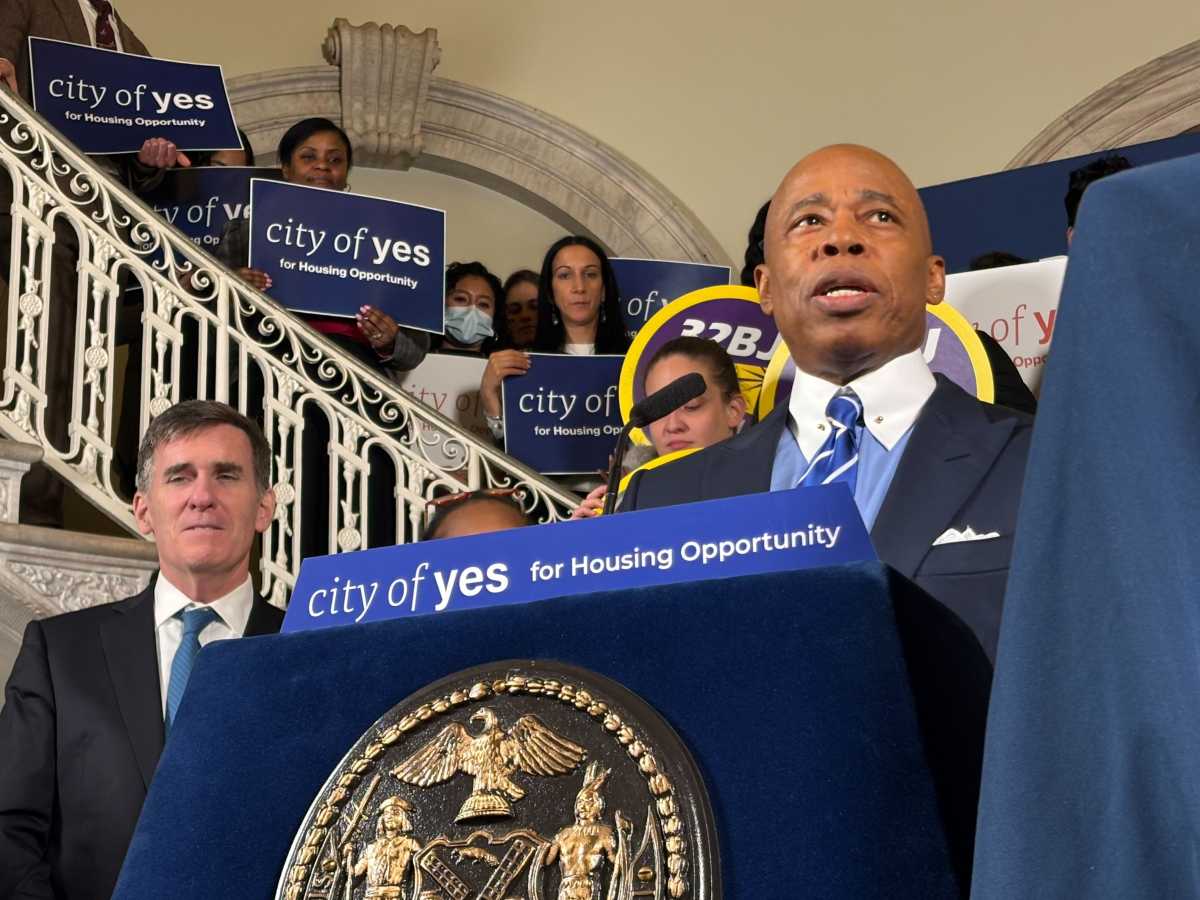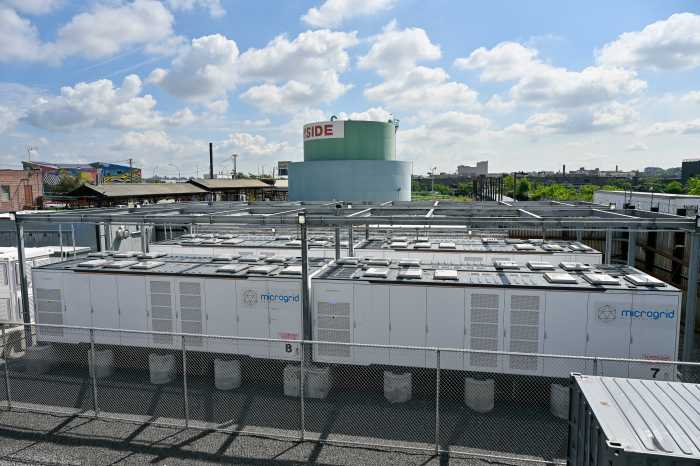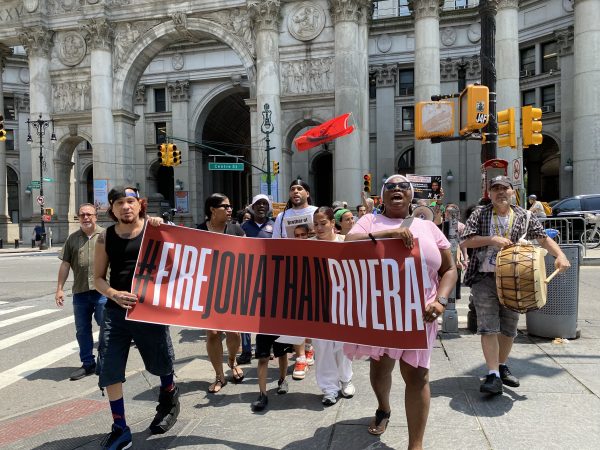Public Place, that vast, contaminated tract of land in Carroll Gardens, might be “sick,” but Gardiner Cross seems confident in its cure.
“We can fix this site for its next intended use,” Cross, a section chief with the state’s Department of Environmental Conservation assured the Land Use/Landmarks Committee of Community Board 6 last week.
The intended use is housing, and lots of it.
The 5.8-acre site at the corner of Smith and Fifth Streets, could one day be home to Gowanus Green, a $300 million project that calls for the construction of nine residential buildings, with heights up to 12 stories, holding 774 units, over 70 percent of which will be affordable to a range of income levels.
While there was a possibility that the project could grow even larger—500 more units bigger—that does not seem to be the case any more.
Five acres of privately held land abutting Public Place will not be subsumed by Gowanus Green, according to the city’s Department of Housing Preservation and Development, which is coordinating the remediation and redevelopment of the site.
“Our development team tried to negotiate to see if that could be folded into the site, but it couldn’t be,” said HPD’s Gabriella Amabile.
Cross and Amabile were among the state and city officials returning to the community board to update the status of remediation plan for the site.
Cross, a geologist by training, was quick to say that the site will not be remediated to “pre-release conditions,” that is to say, the way it was before the myriad of industrial uses polluted its soil.
From 1860 to the 1960’s manufactured gas plants including the Citizens’ Gas Company and Brooklyn Union Gas, which later merged into KeySpan, occupied the site. London-based National Grid, which paid $11.8 billion to acquire KeySpan in 2006, now has the responsibility of remediating the site, and the DEC will oversee the work.
At the plant, coal was converted into a fuel used to heat homes and light lamps, among a variety of other uses.
The byproduct of the industry, coal tar, a toxic, foul-smelling, oily black liquid, has been found at depths ranging as far down as 150 feet below the ground surface.
The clean-up plan calls for excavation of contaminated soil, as well as the removal of holding tanks and other sullied structures. Throughout most of the site, workers will remove soil to a depth of eight feet, and replace it with clean fill material.
“We can clean it up in the shallow subsurface and make sure no one gets exposed,” he said.
While the tar can be hazardous to human health when there is direct exposure, the risk of contact at this site will be “very, very low” Cross said. “Almost at zero,” he said, referring to the probability of exposure.
A waterproof, subterranean steel barrier wall will be constructed to prevent migration of any remaining coal tar into the already polluted Gowanus Canal or other, “off-site areas,” he added. Engineers are presently drilling test borings at the site to gauge the permeability of the soil and gain information on where to best position the wall.
The tar is comprised of roughly 30 percent PAH’s (poly-cyclic aromatic hydrocarbons), and VOC’s, (volatile organic compounds), both of which are harmful to humans and other animals.
“The good news,” Cross observed, “is that it smells.” “When you are working around coal tar, it is hard to get a medically significant does without knowing in advance.”
Most people report headaches if they breathe in coal tar vapors, he said.
A public review examining the transfer of the city-owned site to the developers is expected to begin in spring 2009. The clean-up will commence in spring 2010, and span almost two years. The developers include the Hudson Companies, the Bluestone Organization, the Fifth Avenue Committee and Jonathan Rose Companies.
Cross said his agency will keep a close watch on the clean-up. “This is a pretty high priority site,” he said.
“I can’t promise you that no one will ever catch a whiff of tar,” Cross admitted. But “strong or persistent odors,” however, will be addressed immediately, he added.






















